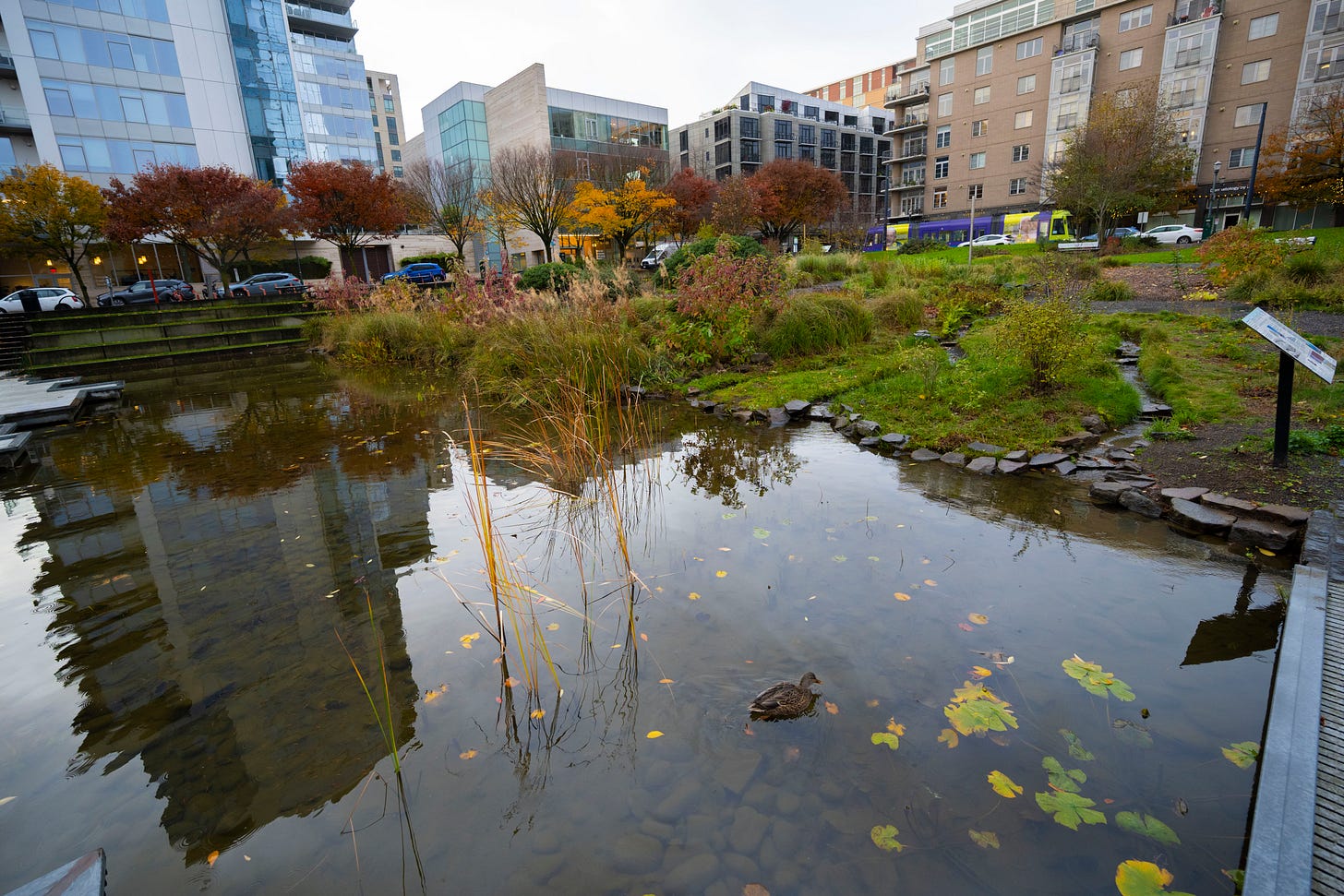Green seeks different source to cover parks backlog
District 4 councilor wants to tap SDCs to address maintenance shortfall
Portland voters approved a levy extending and increasing property taxes this week despite official evidence that the measure was wasteful, lacked accountability and would do little to correct the maintenance backlog it was touted as addressing. Only 2% of the estimated $456 million to be generated would be applied to Portland Parks & Recreation’s $615 million maintenance backlog.
Yet 11 of the 12 city councilors endorsed the measure, including District 4 representative Mitch Green. We asked Green, an economist, why he supported the levy, and what he made of the City Auditor Simone Rede’s report finding that the city had no strategy to fix a “crushing infrastructure funding gap.”
“I found the issues highlighted in the most recent audit to be serious and urgent,” Green replied. “In my view, it highlights a broader lack of a rigorous asset management lens from historical practice that this current council and administration must address head on.
“I do intend to exercise my oversight charge in ensuring we are spending with care and integrity with the passage of the levy,” he added.
As for the deferred maintenance, Green has another plan.
“While the levy had only a small amount earmarked for clearing the maintenance backlog, I amended and we passed the referral legislation that directed the city to examine our internal policy on the system development charges to be used more expansively for major maintenance projects.”
System Development Charges assessed on new development must by state law increase parks capacity, which has been interpreted to mean capital expenditures. Green believes SDC revenues could be spent to “keep assets from failing by restoring them to serviceable level.”
District 4 Councilor Eric Zimmerman also believes SDCs spending should be loosened up in that way, although he did not respond to a request to comment on the parks levy.

Bob Weinstein, an unsuccessful District 4 candidate in 2024, has been the leading critic of the levy. In pre-election conferences with the editorial boards of The Oregonian and Willamette Week, he was the only person presenting the opposing side.
“The results were not surprising,” Weinstein told the NW Examiner. “Portlanders—myself included—love our parks. It’s a classic ‘motherhood and apple pie’ issue, and the measure benefited from a well-funded, one-sided campaign.
“With no organized opposition, proponents were able to sidestep uncomfortable questions about the substantial size in the levy increase, the lack of significant funding to address the $600 million capital maintenance backlog, and the City Auditor’s recent report highlighting Parks Bureau fiscal mismanagement.
“Still, the 55% approval is notable. It came in nearly 10 points below the 64% support for an increased levy reported in polling commissioned by the Parks Bureau in 2024, suggesting that voter enthusiasm was weaker than advertised.
“Because this levy largely ignored capital maintenance needs, a separate bond measure—and another tax hike—is almost inevitable.”







SDCs are one of the biggest contributors to the lack of "affordable" housing. I can say this from experience, having owned a vacant lot and actually thought about building a modest house (in keeping with my neighborhood). But it simply wouldn't pencil out--especially after then-Commission Steve "Tiny Terror" Novick's LTIC, which slapped additional fees on the city's gravel streets. (A long and sad story in itself.)
There were firms that would build the house from a catalog of plans--but they imposed big fees on top of their charges to work within Portland...which ought too tell ya somethin'...
I sold the lot, took a haircut, and the builder put up a McMansion, and got just short of $700K. This is not "affordable."
One reason, as Mr. Weinstein notes in passing, for the nosedive in SDC money is that just about the only major housing projects in the city (amid a national homebuilding depression) are "affordable" public housing projects, fronted by nonprofits (but usually built by subsidiaries of multinational developers). They don't pay SDCs, and they don't pay property taxes.
It would be nice if Mr. Green, aka "the economist," would tally up how many taxpaying properties have been vacuumed up by NGOs (such as Albina Vision Trust) and taken off the tax rolls. Might fix a few parks.
Thanks for bringing up the subject of using SDC’s to address the backlog rather than being required to spend such funds only on park expansion- even though- as the recent City Auditor report noted, Parks has no funds to maintain such new facilities.
Councilor Green fails to mention two critical points; the state legislators have to approve a change in state law governing use of SDC’s in order for the city to be able to use it for existing Parks assets, and the City Attorney would weigh in with an interpretation if there is any effort to use the SDC funds without a statutory change.
Also, it should be noted that the subject of using SDC funds for existing assets has been discussed and supported by a number of other council members, especially Olivia Clark, who has not only stressed the importance of changing the state law that governs SDC’s and then using such funds for the Parks backlog, but has also led the charge for the city to develop a comprehensive- and sorely needed- asset management plan.
It should be noted that the FY 25 SDC balance was about $119 million. While unclear to me, it may be that a portion of that- if not the entire amount- has already been allocated to new projects, such as the North Portland Aquatic Center.
Finally, SDC revenues have gone from a high of about $40 million in FY 18 to only $5 to $7 million in FY 24 and FY 25 respectively. With the council recently waiving such charges to spur development of housing, the question remains as to whether SDC funds, even if authorized to be used for maintenance of existing park assets, would be sufficient to address a $600 million- and growing- capital maintenance backlog.